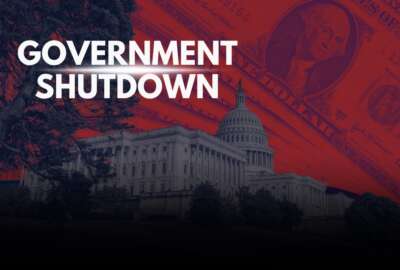Mass-transit subsidy, once again, set to decline
If Congress fails to act by the end of the year, a tax subsidy for commuters who use mass transit is set to drop from a maximum of $245 a month to $130. At the same...
Federal employees who commute to the office via mass transit, such as subways and buses, could find their wallets lighter come Jan. 1.
If Congress fails to act by the end of the year, a tax subsidy for commuters that use mass transit is set to drop from a maximum of $245 a month to $130.
At the same time, fringe benefits for parking are set to rise to $250 a month starting in January.
Two stand-alone measures in the House and Senate would restore parity between the parking and mass-transit subsidies, but time is running out. With the holidays rapidly approaching, only a handful of days remain in the year when both chambers are in session.
Competing House and Senate bills
A bill introduced in the Senate by Chuck Schumer (D-N.Y.), the “Commuter Benefits Equity Act,” increases the mass-transit subsidy to $245 and makes it subject to a cost-of-living increase in January.
Under a similar House proposal, the “Commuter Parity Act,” introduced by Rep. Michael Grimm (R- N.Y.), parking and mass-transit benefits would be equalized at slightly lower amounts — $220 for both — but would also be subject to an annual cost- of-living adjustment.
The federal government has urged agencies for the past decade to encourage the use of mass transit to clear up traffic congestion and to be more environmentally responsible.
Employers can offer either direct nontaxable subsidies for mass-transit use — essentially a transit pass or voucher — or allow employees to set aside portions of their income pre-tax to use for mass-transit commuting. Both are subject to the maximum limits set by legislation and administered by the Internal Revenue Service.
Short-term fixes have expired
As part of the 2009 stimulus bill, lawmakers first approved a short-term measure bumping up transit benefits to make them equal to parking subsidies. However, at the end of 2011, that provision expired and transit subsidies reverted back to about $125 for all of 2012.
However, last January in the fiscal-cliff deal that delayed the onset of sequestration by a few month, Congress again expanded the mass-transit subsidy to $240 — the same as for parking benefits — through the end of 2013 and made it retroactive to January 2012. The IRS, taking into account inflation, later bumped the maximum amount up to $245.
National Treasury Employees Union President Colleen Kelley said she supports both the House and Senate bills.
“NTEU believes that parity in these two elements of the transit subject is a matter of fairness and considerable importance to the many federal employees who rely on public transportation to and from work,” she said in a statement provided to Federal News Radio.
About half of all weekday riders on Washington, D.C.’s, Metrorail service receive some form of transit subsidy, either pre-tax benefits or direct employer subsidies, the Washington Metropolitan Area Transit Authority told WTOP last week.
The Transportation Department’s TRANServe program manages federal transit benefits for a host of federal agencies, including the Departments of Agriculture, Education, Homeland Security and Treasury. In fiscal 2011, in the D.C. region, alone, the program distributed about $150 million in transit benefits to more than 106,000 federal employees at more than 80 agencies .
RELATED STORIES:
Drop in federal transit subsidy could worsen congestion (WTOP)
‘Fiscal cliff’ deal restores mass-transit subsidy
Copyright © 2024 Federal News Network. All rights reserved. This website is not intended for users located within the European Economic Area.





